List of Nuclear and Space Research Centres of IndiaIndia has a lot of renowned nuclear and space research centres, some of which are described as follows:
1) Bhabha Atomic Research Centre (BARC):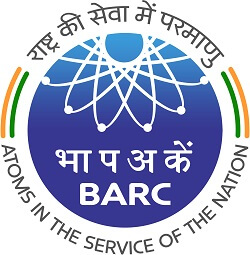
It is a prestigious nuclear research centre of India situated at the Trombay in the Mumbai city of the Maharashtra state of India. Formerly, it was known as the Atomic Energy Establishment Trombay; later, it was renamed BARC in 1967 after the demise of Dr. Bhabha in 1966 due to an air crash. Dr. Ajit Kumar Mohanty is the director of BARC, 12 March 2019 onwards. BARC aims to search and explore peaceful applications of nuclear energy, specifically in the areas of power generation and utilization. Besides this, it also works on the processing of used nuclear fuel and monitors the functioning of nuclear reactors present in the country. It maintains eight research reactors, which are Apsara, Cirus, Dhruva, Zerline, Purnima I, II, and III. It also designs and develops reactors, including the heavy water reactors and fast breeder reactors, and is engaged in the production of radioisotope, and setting up manufacturing units for uranium and nuclear fuels, waste immobilization, isotope laboratories, and more. Furthermore, it has established pilot plants for producing zirconium, heavy water, titanium, heavy water. Besides this, it is also actively engaged in weapons-related projects. 2) Indian Space Research Organization (ISRO):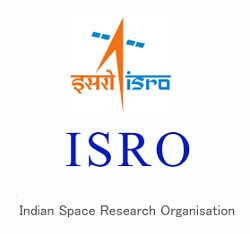
It is an Indian space agency that is famous all over the world for its achievements in the field of space search and exploration. It was established in 1969 after superseding the former Indian National Committee for Space Research (INCOSPAR). It was Dr. Vikram Sarabhai who understood the importance of space technology in the nation's development and guided the ISRO in performing its duties for the development. Accordingly, ISRO started working with the aim of providing space-based services and develop the infrastructure, equipment, and technologies to achieve the same indigenously. Furthermore, it is maintaining a large fleet of communication satellites, the Indian National Satellite System (INSAT) for fast and reliable communication, and Indian Remote Sensing (IRS) satellites for earth observation. So, it has developed various satellites for specific applications for the country, such as communication, weather forecasts, telemedicine, geographic information system, and more. As of 2015, A S Kiran Kumar is the Chairman of ISRO. ISRO has achieved a lot in the space-based services. Today, it is the leading space agencies in the world. ISRO's Vision: To pursue planetary exploration and space science research and use space technology for the development of the nation. Mission:
3) Atomic Energy Commission (AEC) of India:The Atomic Energy Commission of India was established by the Department of Scientific Research in August 1948. It acts as a leading entity of the Department of Atomic Energy (DAE) with its headquarters in Mumbai. Homi J. Bhabha was the first chairman of AEC, and as of 2019, K.N. Vyas was the chairman of AEC. The main objectives behind establishing the AEC are as follows:
4) Electronics Corporation of India Limited (ECIL):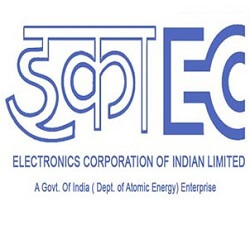
ECIL was established in April 1967 by A.S. Rao to pave a strong foundation in the field of electronics. It is a Govt. of India entity under the aegis of 'department of atomic energy (DAE)' and is headquartered in Hyderabad. Retd. Admiral Sanjay Chaubey is the chairman and managing director of the ECIL, as of July 2018. Vision:To make the country independent in strategic electronics Mission:To become a trusted and vital national asset in strategic electronics while emphasizing Atomic Energy, Defence, and vital areas of national interests. ECI aims to serve the country in the field of peaceful uses Atomic Energy. It is a multidisciplinary organization that emphasizes home-grown nuclear energy, space science, and defence system. It also works in partnership with various renowned nuclear energy enterprises in India, such as Nuclear Power Corporation of India Limited (NPCIL), Bhabha Atomic Research Center (BARC), and more. Besides this, it also actively supports and promotes other vital sectors like Defence Research and Development Organization (DRDO), Defence Indian Ordnance Factories, Department of Space, Civil Aviation, Oil and Gas, Agriculture, etc. It has also produced the first home-grown digital computers in India TDC 312, TDC 316 and solid-state TV, the first earth station antenna of India, and control and instrumentation for nuclear power plant, and more. 5) Uranium Corporation of India Limited (UCIL):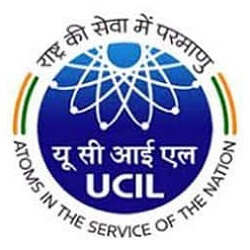
UCIL is a public sector enterprise that works under the administration of Department of Atomic Energy. It was established on 4th October 1967 with a special emphasis on being at the forefront of the Nuclear Power cycle. It is headquartered in Singhbhum, India, and Sh. C.K. ASNANI is the chairman and managing director of UCIL as of March 2020. Mission:To fulfil the need for Uranium for Nuclear Power Programme efficiently and in accordance with the prescribed standards of safety and environment protection Vision:To work continuously to develop and implement a technology for cost-effective mining and processing of uranium ores and to expand services such as consultancy for mining, tunnelling, and processing of ores and implementation of projects. UCIL plays an important role in nuclear power generation of the country by providing the uranium for pressurised Heavy Water Reactors. It uses advanced technologies for its mines and processing plants. It operates six underground mines located at Jaduguda, Bhatin, Bagjata, Narwapahar, Mohuldih, and Turamdih and one open pit-mine at Banduhurand in the State of Jharkhand. The ore collected from these mines is processed in plants located at Jaduguda and Turamdih. At present, UCIL is a continuously growing government entity that keeps expanding its network of mines and processing plants. 6) India Rare Earths Limited (IREL):
IREL (India) Limited, (formerly it was called Indian Rare Earths Limited) is established on 18th August 1950. Its first branch 'Rare Earths Division' (RED) was opened at Aluva in Kochi, Kerala. Later in 1963, it became a fully developed Govt. of India organization under the control of Department of Atomic Energy. After this, it has established two more branches; one at Chavara, Kerala, and another one at Manavalakurichi (MK), Tamil Nadu, to acquire companies in the field of mining and separation of beach sand minerals in the southern part of the country. Furthermore, in 1986, it has set up Orissa Sands Complex (OSCOM) at Chatrapur in Odisha. It is its largest unit for mineral separation and mining of beach sand. At present, its annual capacity is about six lakhs tons of ilmenite and beach sand minerals such as Zircon, Rutile, Garnet. It has also established a Rare Earth Extraction Plant at Odhisha and a High Pure Rare Earths (HPRE) plant at RED, Aluva. Besides this, it is also planning various other activities in this field and has an in-house Research and Development division at Kollam, Kerala, to support mineral and chemical operation. 7) Tata Institute of Fundamental Research (TIFR):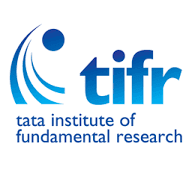
It is a national research centre that belongs to Govt. of India and is operated under the Department of Atomic Energy. It is also a deemed university that offers master's and doctoral programs' degrees. TIFR was established in 1945 with the help of Sir Dorabji Tata Trust under the guidance of Dr. Homi Bhabha. Its main campus is located in Mumbai, and other centres are located in other cities such as Pune, Hyderabad, and Bengaluru. The logo of TIFR is designed by Mr. Montosh Lall, who was a 1983 graduate of the J.J. Institute of Applied Art in Mumbai. It comprises three tapering bands that curve clockwise to enclose a solid circle. In the field of education, it offers various Ph.D. and Integrated M.Sc. & Ph.D. programs in different subjects of natural sciences such as Biology, Chemistry, Physics, including Mathematics, Computer Science. Besides this, it also allows specific M.Sc. programs in sub-domains of Biology and graduate program in physics, biology, chemistry, etc. 8. Saha Institute of Nuclear Physics (SINP):
Saha Institute of Nuclear physics (SINP) is situated at Bidhannagar city in the state of Kolkata, India. It is a renowned institute for training, research, and study in physical and biophysical sciences. The institute is headquartered in Kolkata, West Bengal, and was founded by Professor Meghnad Saha, a famous Indian physicist in 1949 as a part of the University of Calcutta. At this point, its name was "Institute of Nuclear Physics," and Professor M. N. Saha was part of this institute as its founding director. Later, when M. N. Saha expired in 1956, this institute was renamed after him to honour its founder. In the beginning, the institute's research was mainly focused on Nuclear Physics and Biophysical Sciences. Over the years, its research was diversified to cover various other fields of chemistry, physics, and biology. Courses offered:SSP: It is a one-year summer student program (SSP) in which students become part of research and development activities and projects at SINP. Ph. D. program: It started as a one-year pre-Ph.D. course called Post-M.Sc. or PMSc. Over the next few years, its scope was diversified to cover other areas of Physics. Scientific Information and Resource Division (SIRD), which is a unit of SINP coordinates this course. Undergraduate Associateship program in Biophysical Sciences and Physics: It is for the selection of candidates as Undergraduate Associates of SINP. It aims to provide a platform for the budding scientists and to motivate them 'by providing necessary guidance and resources' to pursue research in Physical and Biophysical sciences as a career. 9) Nuclear Fuel Complex (NFC):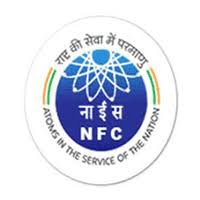
NFC is an industrial division of the Department of Atomic Energy, Govt. of India, headquartered in Hyderabad. It was established in 1971 to cater to the fuel requirements of the nuclear power reactors and nuclear programs of Govt. of India. As of March 2020, Dr. Dinesh Srivastava is the Chairman cum Chief Executive of Nuclear Fuel Complex. Vision:To support India in its efforts of becoming self-reliance in nuclear fuels fabrication and to promote India's three-stage nuclear power program for sustainable and clean energy and always remain committed to excel Mission:
At present, it is the only organization in the world with a complete manufacturing cycle (from ore to core) and in which Zirconium and Uranium are processed under the one roof. Besides this, it has developed advanced facilities and process technologies for nuclear fuel production and fabrication. Thus, it is playing an important role in making the nation independent in the Nuclear Power Programs. 10) Vikram Sarabhai Space Center (VSSC):
It is a leading centre of Indian Space Research Organisation (ISRO) that operates under the Department of Space of the Govt. of India. It is named after Dr. Vikram A Sarabhai, who is known as the father of Indian Space Research Programs. As of March 2020, Dr. K Sivan is the Chairman of VSSC. VSSC has played a vital role in rocket research and launch vehicle projects of ISRO. It is also involved in the research and development activities in related fields such as aerodynamics, propellants, solid propulsion technology, control and simulation, computer science, information technology, aerospace mechanisms, vehicle integration, and testing, and more. Besides this, it also has a Space Physics Laboratory (SPL) that undertakes research and study in atmospheric science and allied space research activities. Vision:To harness space technology for the development of the nation while doing space science research and planetary exploration Mission:
Objectives:
11) Physical Research Library (PRL):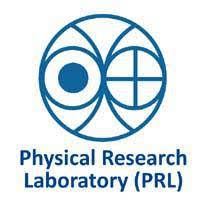
PRL is a reputed research institute which gives emphasis on research in the fields of astronomy, solar physics, astrophysics, geosciences, space and atmospheric sciences, astro-chemistry, and more. Its headquarters is in Ahmedabad, India, and it is an independent unit of Department of Space (DOS), Govt. of India. PRL was founded on 11th November 1947 by Dr. Vikram Ambalal Sarabhai, who is known as the Father of Space program in India. Dr. Anil Bhardwaj is the director of PRL as of March 2020. It is actively involved in planetary exploration activities and projects and has achieved a lot in the fields of planetary sciences and exploration. It has an infra-red observatory at Mt. Abu for the study of stellar astronomy, and a lake site solar observatory in Udaipur for the study of solar astronomy. Besides this, it has one more facility at Thaltej, Ahmedabad, that undertakes the projects related to planetary exploration. 12) Indira Gandhi Centre for Atomic Research (IGCAR):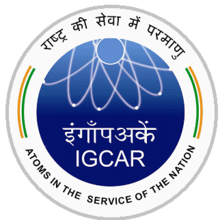
IGCAR is a renowned centre for atomic research. It was established in 1971 under the Department of Atomic Energy (DAE) that belongs to Govt. of India. It is located at Kalpakkam, Chennai. Dr. A.K. Bhaduri is the director of this research centre as of March 2020. The centre is actively involved in scientific research and advanced engineering for developing the Fast Breeder Reactor technology. It successfully operates a fast breeder test reactor based on a unique mixed plutonium uranium carbide fuel and also operates a Kamini reactor, which is the only reactor in the world that uses U233 fuel. Besides this, the construction of a 500 MWe prototype fast breeder reactor is in progress in this institute. Mission:To undertake a wide range of programs of scientific research and development in advanced engineering, for establishing the technology of Sodium Cooled Fast Breeder Reactors (FBR) and fuel cycle facilities. It also looks forward to developing and use the latest, improved techniques, equipment, processes for FBRs, and to undertake research for the new inventions in Fast Reactor technology. 13) National Chemical Laboratory (NCL):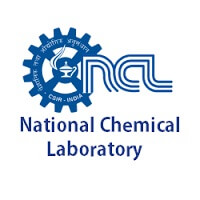
It belongs to the Council of Scientific and Industrial Research (CSIR). It was founded in 1950 and is located in Pune. It is an organization that is engaged in research, development and consulting based on science, knowledge, and experience. It is world-famous for its contribution to scientific research in chemistry and chemical engineering and its outstanding work in the field of industrial research, including its support to the industry from concept to commercialization. Prof. Ashwini Kumar Nangia is the Director of NCL as of March 2020. Vision:
Mission:
Guiding principle and values:
14) Space Application Centre (SAC):
It is a research institute engaged in multidisciplinary activities under the aegis of the ISRO. Its headquarters is located at Ahmedabad in Gujrat, India. Its main job is to develop space borne and airborne payloads or instruments and their uses for societal benefits and national development. Their uses mainly intended to fulfil the navigation, communication, and remote sensing needs of the nation. Furthermore, it has contributed a lot to scientific and planetary missions of ISRO, such as Mars Orbiter Mission, Chandrayaan-1, etc. Shri. D. K. Das is the Director of 'SAC' as of March 2020. Furthermore, the communication transponders that are developed for Geo Synchronous Satellite (GSAT) and Indian National Satellite (INSAT) enabled public and private sectors to use the Internet, DTH, broadcasting, telephones, and more. 15) High Altitude Research Laboratory (HARL):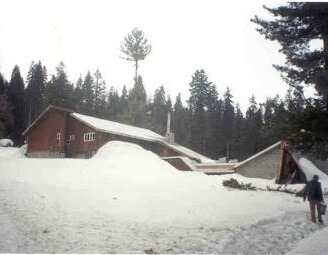
The HARL is a research laboratory located at Gulmarg, Kashmir. It was established in 1963, as suggested by Dr. H.J. Bhabha, that there should be a high altitude or latitude laboratory for research purposes for the scientific community. After its establishment, a wide range of scientific researches in the area of ionospheric studies, cosmic ray astrophysics, geomagnetism, radio astronomy, high altitude flora, and fauna, etc., are conducted in this laboratory. Besides this, it is one of the outstation facilities of Bhabha Atomic Research Centre where a low energy Neutron Monitor is operated. 16) Antrix Corporation Limited (ACL):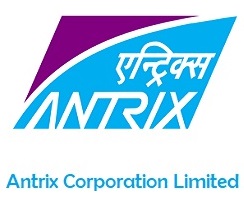
ACL is a Govt. of India Company under the aegis of Department of Space (DOS). It is located in Bangalore, India, and was established on 28 September 1992 under the Companies Act, 1956, as a commercial arm of Indian Space Research Organization. It promotes and markets the products and services originating from the Indian Space Programs. In 2008, it was awarded the 'MINIRATNA' status. Shri. Rakesh Sasibhushan is the Chairman and Managing Director of Antrix as of March 2020. Vision:To become a world-renowned space organization while using the skills and strengths of Indian Space Research Organization (ISRO) and other enterprises in the field of space At present (as of March 2020), the business activities of Antrix are as follows:
ACL follows Corporate Social Responsibility, CSR policy for the upliftment of the weaker sections of the society. It conducts special activities in the fields of education, healthcare, economic development, and protection of the environment. It allocates 2% of its last three years' profits as annual budget each year and works in collaboration with Public Sector Units, Non-Government Organizations, and Government agencies. 17) Central Mechanical Engineering Research Institute (CMERI):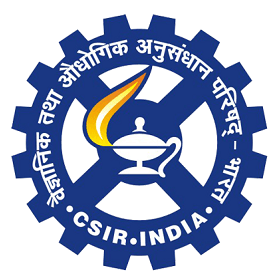
CMERI is located at Durgapur, West Bengal. It was incorporated in February 1958 to develop indigenously mechanical engineering technology. Prof. Harish Hirani is the director of CMERI as of March 2020. It is a leading R&D institute for mechanical engineering under the control and guidance of the Council of Scientific and Industrial (CSIR). It is the only national-level research institute in mechanical engineering, so it is highly committed to serve the industry and develop mechanical engineering technology to reduce the nation's dependency on foreign collaboration in economic and strategic sectors. Furthermore, it is supporting and promoting ideas, inventions, and innovations to establish Indian talent in the international arena where Indian products may compete. Vision:To emerge as a world-renowned institution that has the confidence of industries and visibility to society in mechanical engineering sciences and technologies Mission:
Mandate:
18) Satish Dhawan Space Centre (SDSC):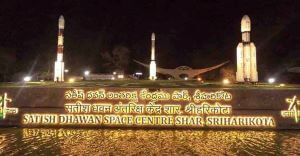
SDSC, the spaceport of India, is located at Sriharikota in Andhra Pradesh. It is established to provide a launch base for the space programs of India. Besides this, it is also used for the processing of solid propellant, solid motors' testing, integration and launch operations of launch vehicles, mission control centre, and more. The PSLV and GSLV are launched from the two launch pads of SDSC. Formerly, it was known as the Sriharikota Range (SHAR). Later in 2002, it was named SDSC to honour ISRO's last chairman Satish Dhawan after his demise. Its current director, as of March 2020, is Shri A Rajarajan. The mandate for SDSC is as follows:
Besides this, it has a separate launch pad for the launch of sounding rockets. It also has the facility of launch base infrastructure for ISRO's sounding rockets. 19) Atomic Minerals Directorate for Exploration and Research (AMD):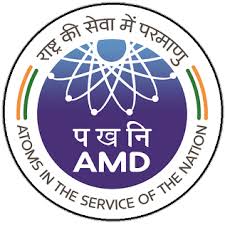
It is the oldest division of the Department of Atomic Energy (India), Govt. of India. It has seven regional centres and a headquarters in Hyderabad. The main role of this organization is to find out and analyse uranium's sources or reserves needed for the successful execution of Atomic Energy projects in the country. It uses the latest technologies such as Time Domain EM system with a gamma-ray spectrometer and magnetometer for airborne geophysical surveys, and various types of field operations such as geological, geo-chemical surveys, and drilling activities. Furthermore, the laboratories which are set up to assist the field investigations are equipped with advanced facilities. The nuclear power program of the country involves three stages; different atomic minerals are required at each stage. Therefore, the AMD's exploration activities are linked with different stages of the nuclear fuel cycle, e.g., Front end: identify atomic mineral deposits through surveys; Middle stage: selecting the site for nuclear power reactors and Back end: identification of sites for the disposal of wastes. 20) Variable Energy Cyclotron Centre (VECC):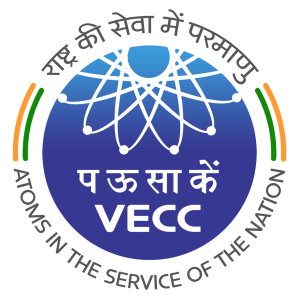
It is a reputed R&D division of the Department of Atomic Energy under the support of Govt. of India. It is also a constituent institution of Homi Bhabha National Institute. Its headquarters is in Kolkata, West Bengal, India. As of March 2020, Dr. Sumit Som is the director of VECC. The name of the institute is derived from the first variable energy cyclotron that was built in Kolkata in the 1970s. The centre is actively engaged in carrying out cutting edge research and development in the areas of Accelerator Science and Technology, Material Science, Nuclear Science, Computer Science & Technology and other allied areas. It also offers a pre-doctoral orientation course of one-year duration in physics for the students of Homi Bhabha National Institute (HBNI).
Next TopicTop International Airports in India
|
 For Videos Join Our Youtube Channel: Join Now
For Videos Join Our Youtube Channel: Join Now
Feedback
- Send your Feedback to [email protected]
Help Others, Please Share










